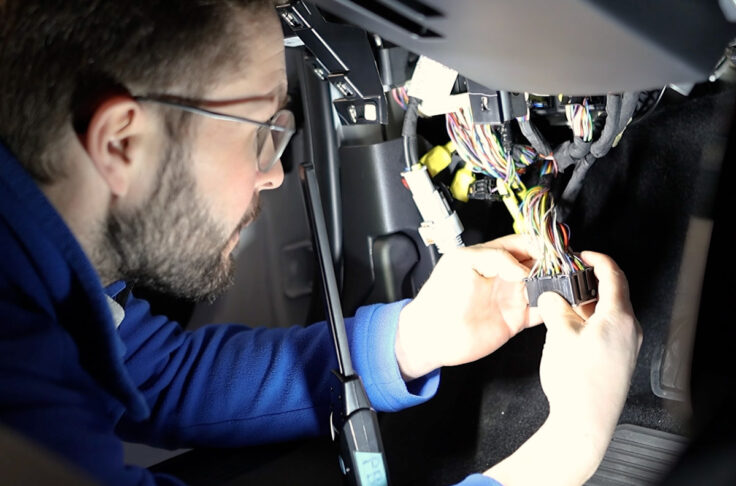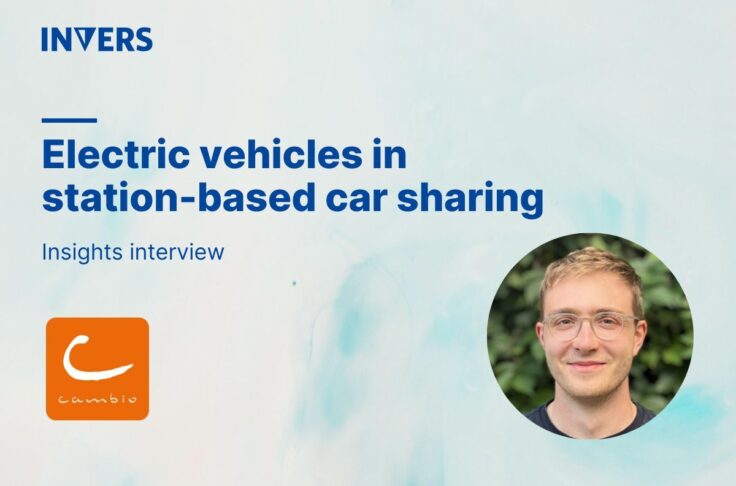Building Mixed Fleets with OEM APIs and Aftermarket Telematics

Summary
Most OEM telematics still lack the necessary features for car sharing operations. The Tesla API is the exception and a significant breakthrough as it grants car sharing operators crucial controls like remote immobilization. However, it still requires complex API integration. This works for a single OEM but doesn’t scale well for a mixed fleet with different vehicle models. INVERS OEM Integrations solves this by standardizing data from both the TeslaAPI and the market-leading CloudBoxx telematics so that you can easily add Teslas into your existing fleet without being limited to using Tesla vehicles.
Why OEM Telematics are Interesting for Car Sharing
The choice for making a vehicle sharing-ready used to be simple and clear: reliable, proven aftermarket telematics. Operators depended on these solutions because most OEM telematics simply weren’t robust enough to handle the technological demands of car sharing operations. Indeed, for the vast majority of current vehicles, aftermarket telematics remain the most reliable and proven solution.
However, advanced and commercially viable OEM APIs like the Tesla API might be a pioneer of a new age where OEM APIs become more and more widespread throughout fleets.
This shift introduces a critical future-proofing challenge: How do you build a sharing service today that is flexible and scalable enough to manage tomorrow’s mixed fleet? If the trend toward accessible OEM APIs continues, operators who attempt to directly integrate and maintain each separate API will face a nightmare of differing data formats, commands, capabilities, and uptime guarantees.
This article will explain why the Tesla API is such a significant development for car sharing and how it changes the game for operators. We’ll show you how a unified platform like INVERS provides the solution to the mixed-fleet challenge, enabling you to add Teslas to your existing CloudBoxx fleet and manage everything from a single technology source.
Why Most OEM Telematics Fall Short for Car Sharing
The fundamental challenge with traditional OEM technology lies in its original design intent. Most OEM telematics systems were engineered for basic, consumer-facing functions, such as vehicle diagnostics, safety alerts, or in-app heating control.
Successful car sharing operations require a lot more capabilities: Real-time data streams for accurate billing and vehicle status updates, or the ability to remotely immobilize a vehicle for security and operational control. The cars need to consistently have a connection and not go offline if they enter a parking garage. For consumer-facing functions, it might not be a big issue if an API goes offline for maintenance on a single Saturday. For car sharing, this would be a nightmare.
But receiving commands and ensuring connectivity aren’t the only barriers. Even if you find an OEM API with adequate features, you must invest heavily in in-house development for integration. This immediately locks you into that specific manufacturer. Want to add vehicles from another manufacturer? It requires another resource-intensive API integration, but you would still be limited to just a few vehicle models for your fleet.
Why the Tesla API is a Game-Changer for the Industry
Tesla recognized the need for a deeper, more robust digital connection to its vehicles for third-party service providers. The Tesla API is currently the most sophisticated, commercially, and technically viable OEM API for car sharing. One of the reasons is its reliable command execution.
For car sharing operators, this command capability is key as it enables essential functions that are usually only available through aftermarket hardware. These crucial remote commands include:
- Locking/unlocking central lock
- Opening/closing the trunk
- Remote immobilization
Furthermore, Tesla’s approach is defined by its accessibility and usability. The API offers fair pricing and does not restrict access to a direct, formal partnership with the OEM. This openness makes the technology truly accessible for shared mobility operators and technology providers.

Why Relying on Single OEM APIs Doesn’t Scale
The emergence of the Tesla API creates a new option for fleet expansion, but it simultaneously introduces a critical challenge for operators: the technical debt of managing a multi-OEM API landscape.
A reliance on building and maintaining individual integrations for every manufacturer quickly becomes a scaling nightmare. Each OEM comes with its own technical ecosystem, presenting a constant flow of difficulties for your internal development team:
Divergent Data Formats:
Every manufacturer transmits vehicle data using different protocols. One OEM’s door status might be a simple 1 or 0 that describes whether any door is open, while another API returns a distinct state for each door, maybe even including the trunk. Fuel level or state of charge is sometimes delivered in percentage, in liters, or even as remaining range. Standardizing this data requires constant developer resources.
Inconsistent Command Sets:
A command as simple as “lock the doors” requires unique code for every OEM. You also have differences in what you get back. Some APIs return an info when the command was successful, telling you the car is now open, while others just execute the command asynchronously. This drastically increases complexity, slows down the development of new features, and makes system-wide updates a heavy burden.
Maintenance and Uptime:
When an OEM updates its API (which happens frequently), your custom integration may break. Your team must then invest time and effort to fix the integration or you run the risk of vehicle downtime and service disruption.
Why OEM APIs Won’t Replace Aftermarket Telematics for Car Sharing
While the Tesla API is revolutionary, aftermarket telematics like CloudBoxx remain the undisputed gold standard for car sharing.
First and foremost, they offer the ability to integrate different vehicle models into your fleet without integrating each API separately.
But even for homogenous fleets with only a single model that is integrated via OEM API, the ex-factory telematics reaches its limits. Aftermarket telematics offer advanced asset protection capabilities that even the most sophisticated OEM APIs cannot fully replicate:
- Automated AI damage detection to spot damages in real-time
- Driver behavior monitoring to identify reckless driving
- Vehicle movement monitoring to prevent theft
Advanced aftermarket telematics also support essential access features, which are necessary for many corporate, university, or regional sharing models. This includes RFID card access and dedicated keyholders to make sure keys and charging cars are in the vehicle when the rental ends.
We anticipate a future where fleets composed of vehicles equipped with telematics, like the CloudBoxx, mixed with API-enabled vehicles will be the norm. Telematics will retain their crucial role for a long time because OEM APIs, which are not purpose-built specifically for car sharing, will not fulfill every single operational need. Building your business on a platform that is already engineered to support this future hybrid scenario is key for achieving both flexibility and operational success.
Manage mixed fleets with INVERS OEM Integrations
INVERS OEM Integrations is the first solution on the market that allows you to operate API-enabled Teslas alongside your existing fleet. It proactively handles the complex technical integration of the Tesla API on your behalf. This saves you the immense hassle, time, and expense of building and maintaining your own dedicated integration solution.

We standardize and normalize data and commands, so Teslas behave like any vehicle on the INVERS platform, offering you the ability to build your fleet with the best of both worlds: More than 1,000 available vehicles models and the additional capabilities of the CloudBoxx for your core fleet, combined with the flexibility to integrate API-enabled vehicles like Teslas without extra hardware installation. To absorb your financial risk, INVERS OEM Integrations comes with one flat monthly rate with no per-call charges and no usage-based surprises. And you can start it right away! It only takes 10 Minutes to make your Teslas sharing-ready. No matter if it’s a single Tesla or a fleet of 100 vehicles.
Sounds like a solution for your business? Add your first Tesla today!


